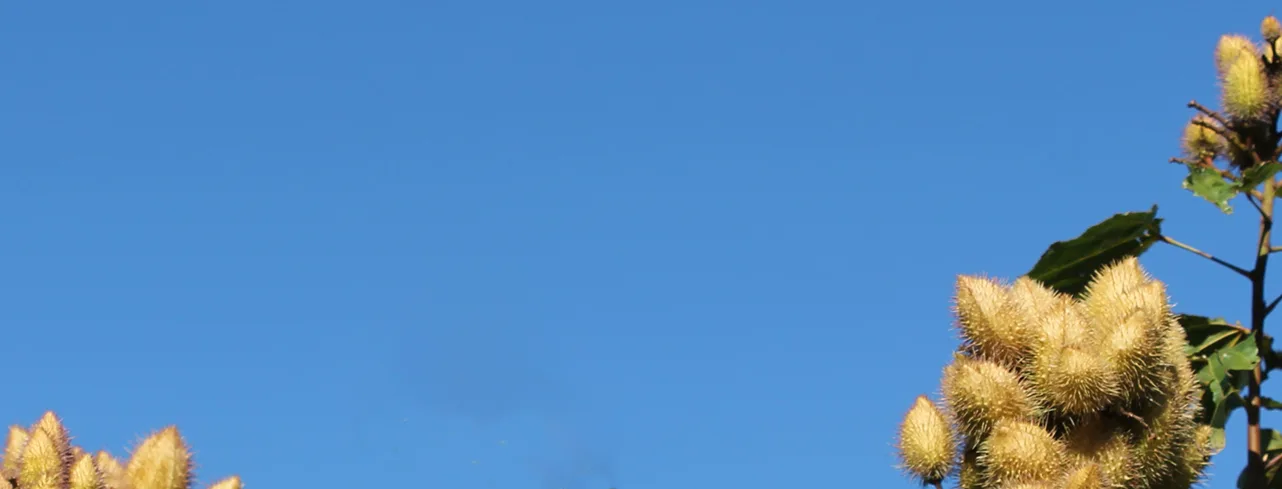Annatto
The fundamentals
Produces shades:
Latin name: Bixa Orellana
Pigment: Bixin and norbixin
E-number: E160b
6 facts about Annatto
How annatto is grown
Annatto trees thrive in tropics and frost free subtropic regions with plenty of rain and a dry season for seed ripening. Trees can be germinated from seeds or from cuttings and begin producing yields after 2-3 years.
The trees require annual pruning for maximum yield. Seed pods start forming 30 days after flowering, and the seeds are typically ready to harvest 60 days later.
Each seed pod contains about 50 seeds, and each tree produces between 2-4 kg per year. Harvests are sun dried and bagged for shipment.
Harvest calendar and growing areas
Annatto is harvested from wild and cultivated trees from late July to September in Brazil, and in December in the Ivory Coast and Kenya.
Developing robust, productive annatto varieties is a long-term investment
Oterra is a front-runner when it comes to developing the best annatto bushes to minimize land usage and help local farmers.
The annatto industry in the Ivory Coast means more families can earn a living without migrating to cities
Oterra's active involvement in the annatto industry benefits people in the local area and contributes to a robust, consistent supply of annatto natural food coloring to food manufacturers.
What you should know about bixin and norbixin from annatto
Oterra's stable, industry-leading formulations allow you to benefit from all of the advantages of annatto as a natural food color while minimizing any intrinsic challenges associated with this plant.
The pigment in annatto is available in two forms -- bixin and norbixin. Bixin can be hydrolyzed into norbixin, which is water soluble in alkali.
Bixin is oil soluble and extremely stable.
Norbixin is water soluble at pH levels above 5.0 and slightly less heat stable than bixin.
Natural Strengths
Good heat stability
Shade is unaffected by pH
Binds to protein, making it more stable
Natural Challenges
Can be sensitive to light
Low pH can cause precipitation, unless protected against acid in formulation
Food colored naturally with annatto
Bixin Encapsulated bixin can produce a pinkish shade, but otherwise it produces yellow and orange.
Norbixin Norbixin produces yellow and orange shades. It is the most common form of annatto .

